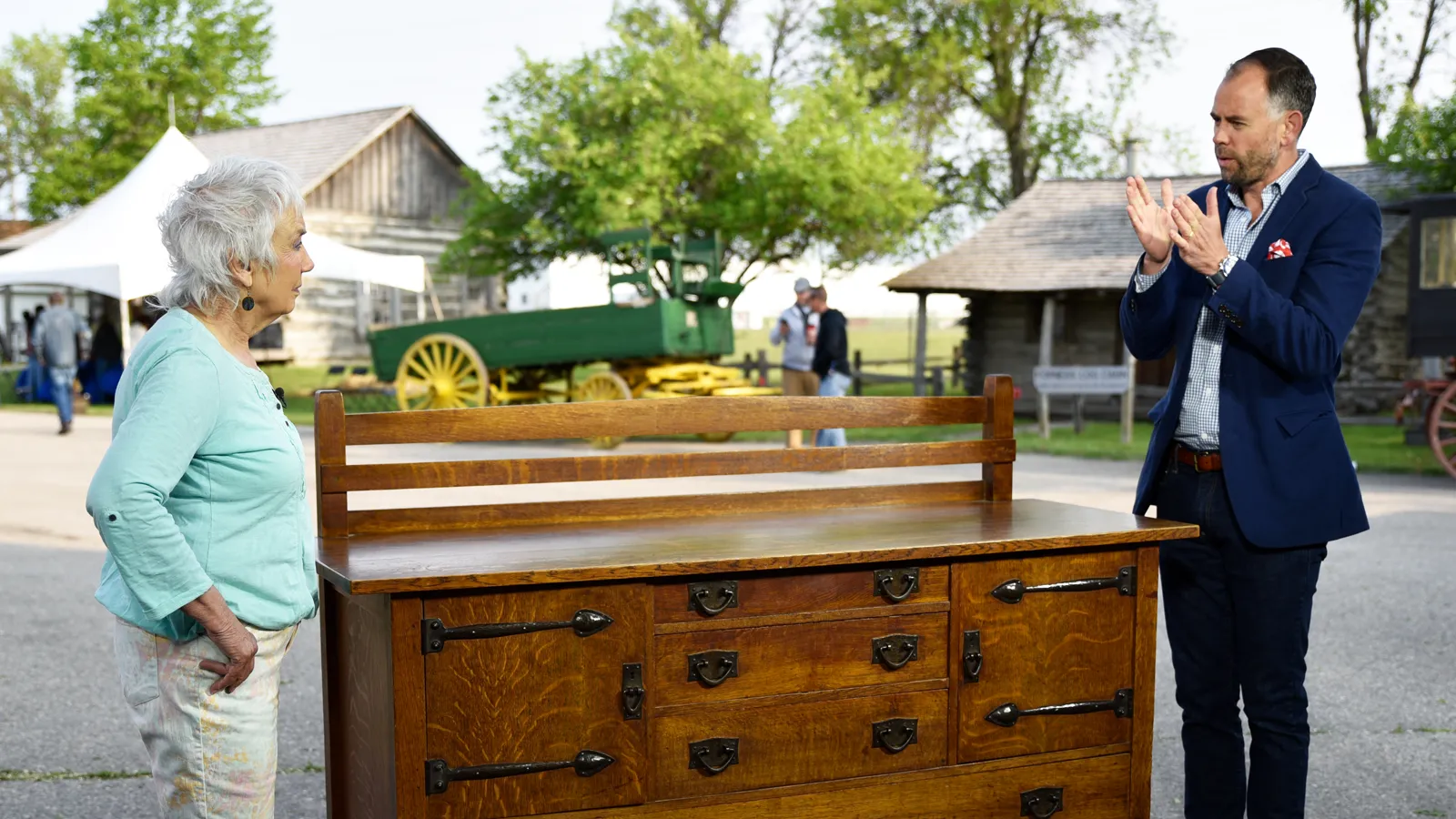GUEST: This is a piece that I purchased at a flea market in Detroit Lakes, Minnesota, in about 1969 or 1970. And we bought it so that we would have a change table for our firstborn baby. I have pictures of my daughter at six months sitting in a bathtub on top of this buffet.
APPRAISER: Do you remember how much you paid for it?
GUEST: This antique dealer down there had several buffets of different types, and he wanted to clean out his antique store because they were taking up so much room, so he said that we could have any one we wanted for $25.
APPRAISER: Wow! And do you know who made it?
GUEST: I believe it's a Stickley, because I found the labels, actually, like, this week, as I'm getting it ready to bring it here.
APPRAISER: So the piece is by Stickley, and the firm, while not owned by the family, is still in business today. But this piece was made by Craftsman, which was a Stickley company, which was started at around 1900. What we also know is that it was retailed through their New York showrooms, and then that's really helpful, because then we have a better sense of when it was made, and we are able to say it was between about 1905 and 1910. So the paper label on the back has all of that information, which is really, really helpful. The Stickley Brothers firm was established in upstate New York just outside of Syracuse. The Arts and Crafts movement, which came over from England, sort of was really established in upstate New York by Stickley. Some people refer to this as Mission-style furniture.
GUEST: Mm-hmm.
APPRAISER: And Stickley really didn't like the use of that term. He really preferred Arts and Crafts. It's a much more simplistic term. This is a really wonderful example of one of his pieces, it's made of oak, with these wonderful quarter-sawn oak panels here and this absolutely fabulous hammered-copper hardware-- these wonderful big hinges. You've got the big ring handle, cabinet door handles, and then also the drawer pulls. Also, this piece back here, do you know what this is for?
GUEST: Yeah, for plates. I always have put plates in there.
APPRAISER: Yup, that's exactly right, that's for plates. And then what's really nice... We have the Stickley mark in there.
GUEST: Mm-hmm.
APPRAISER: Which is a joiner's compass. And it says, "Als Ik Kan," which, loosely translated, means "To the best of my ability." I would call it a sideboard. I think you had called it a buffet.
GUEST: Mm-hmm.
APPRAISER: They're very interchangeable terms. What's really lovely about this piece is that the finish is almost completely original. Do you see there's a color variation along this front edge? It's a little lighter, this warm honey color here?
GUEST: Yeah.
APPRAISER: Well, that's simply because when people were cleaning and dusting it, they really just focused on dusting the front edge, so then you have this transition back to the back, where it maybe wasn't dusted as much. That's a really good way to look at the finish and have a sense of whether it's original or not.
GUEST: Really?
APPRAISER: I can tell you $25 was a very good investment.
GUEST: (laughs)
APPRAISER: If I were to see this come up for auction today, I would expect to see an auction estimate of between around about $3,000 and $5,000.
GUEST: Okay, well, that's exciting. That's fun. Now we, now we know.











